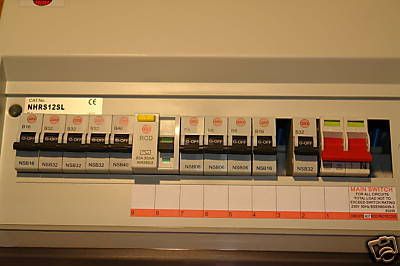I notice these were being sold off (split load). I assume this is because they are 16th edition ?
The only difference I can see with the 17th edition is the 2nd RCD. Is it now a requirement to have both RCD's for a split load ?

Can someone please give me some tips on how to configure the split load and what the reasoning is ?
Is it to cut one half off when you go on holiday ?
Is it so that half your house works when the RCD goes ?
I was going to put the alarm, fridge,boiler and 1 light circuit on the right red part.
I guess I should buy a 2nd RCD to go in it ? I notice in another thread it states that all sockets should be covered by a 30mA RCD.
Thanks for any tips
Note to self. Must read this:
http://www.electrium.co.uk/Wylex17th Edition.pdf
The only difference I can see with the 17th edition is the 2nd RCD. Is it now a requirement to have both RCD's for a split load ?

Can someone please give me some tips on how to configure the split load and what the reasoning is ?
Is it to cut one half off when you go on holiday ?
Is it so that half your house works when the RCD goes ?
I was going to put the alarm, fridge,boiler and 1 light circuit on the right red part.
I guess I should buy a 2nd RCD to go in it ? I notice in another thread it states that all sockets should be covered by a 30mA RCD.
Thanks for any tips
Note to self. Must read this:
http://www.electrium.co.uk/Wylex17th Edition.pdf

